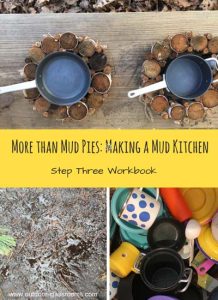2-4 Mud Kitchen Photo Studiesx
Mud is a fabulous medium for exploration and discovery for children. The Mud Kitchen invites children to become scientists, cooks, entrepreneurs, and artists. Have you ever thought what would happen if every outdoor classroom included a Mud Kitchen and all parents, families, teachers, and communities embraced and valued Mud as a teaching tool? Children just might navigate their world feeling the freedom to get dirty and explore without hesitation! Did you know Mud can make you happier? Mud play connects children to nature and playing in Mud has health benefits.
Welcome to More than Mud Pies: Making a Mud Kitchen Module 2-3. In this course, you will be exploring all the elements for making your own one-of-a-kind Mud Kitchen. If you have any questions, leave a comment below or email me a victoria@outdoor-classrooms.com. If you would like to connect with other Mud Kitchen enthusiasts, check out our CIRCLE Membership.
Objectives:
- To take a closer look at a different Mud Kitchen
- Explore Tom Bedard’s Framework for Play using a Mud Kitchen photo study
- Get inspired to add these elements to your Mud Kitchen design
Session Checklist:
- Study the pictures
- Answer the Mud Kitchen study questions
- Sketch new ideas for your Mud Kitchen in your Visual Journal
In this session, we are focusing on fine-tuning our understanding of Tom Bedard’s Framework for Using Play and adapting it to a Mud Kitchen picture study. This Mud Kitchen is at the Parker River Community School in Rowley, MA.
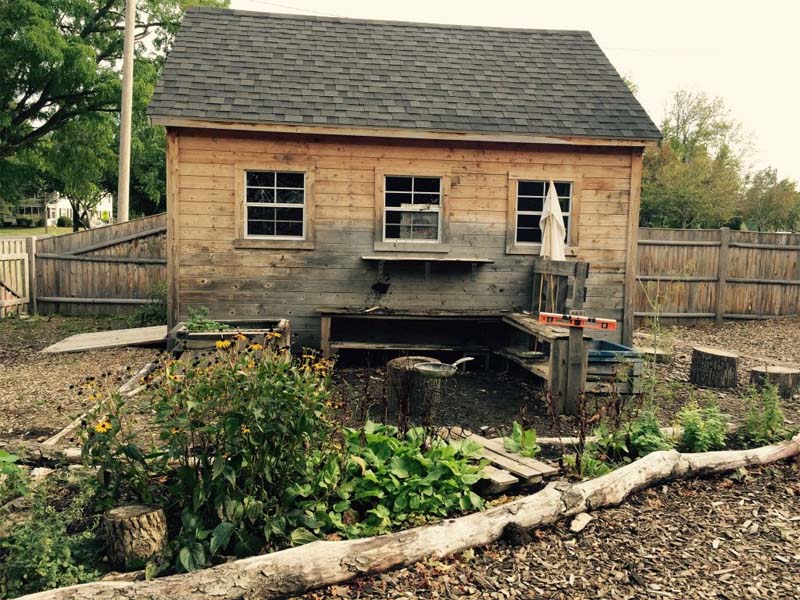
Step 1: Take a look at this Mud Kitchen. (Above) What is the first thing you think about? What do you see?
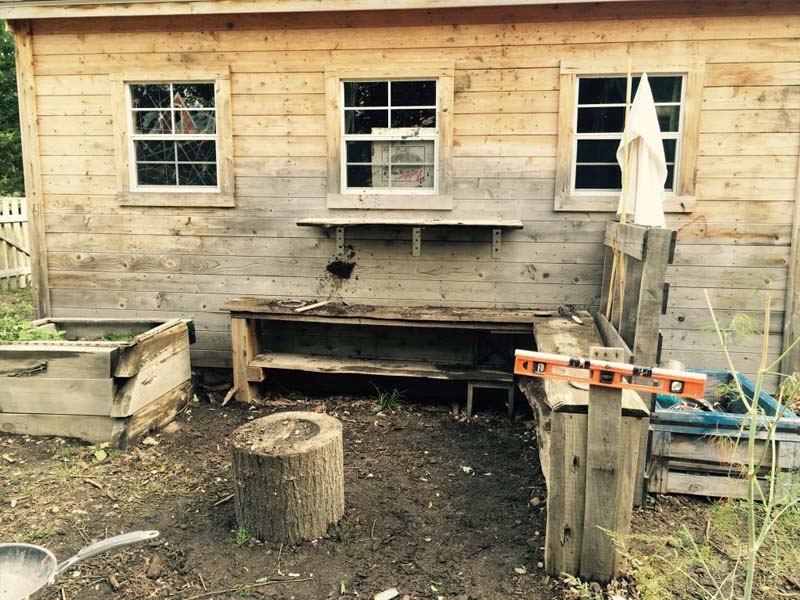
Step 2: Now let’s take a closer look. Can you see Tom Bedard’s Framework for Creating Play Spaces?
- Overarching Process: Children’s Desire to Transport
- Elements: Levels, Space, Holes, Open and Closed
- Orientation: Vertical, Horizontal, Incline
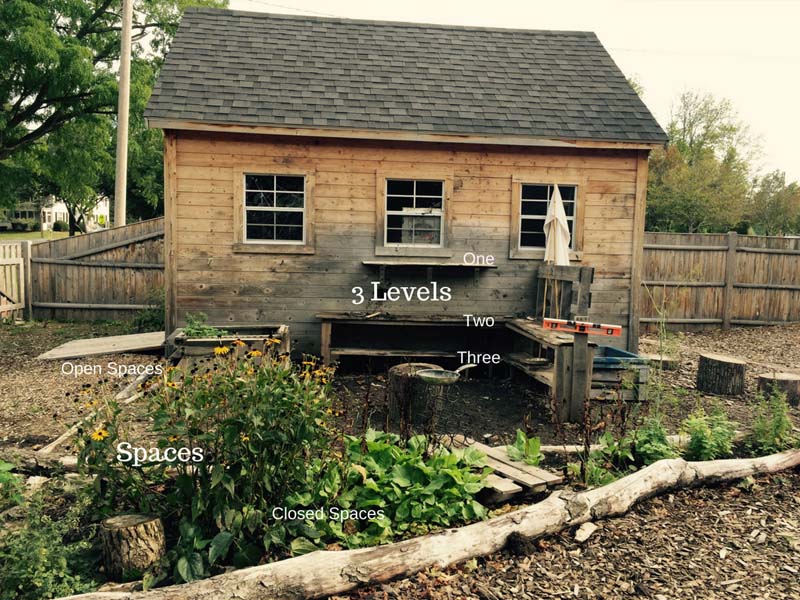
Questions to consider: Think about what could be added.
- Is there a place for children to transport?
- Are there holes for children to peek through?
- Do children have things to open and close?
- How would you add vertical, horizontal or incline features?
Share your comments below.
Now let’s look at different types of Mud Kitchen’s
Step 4: See if you can find Tom Bedard’s Framework for Creating Play within the below Mud Kitchens.
Step 5: If you are interested in building a Mud Kitchen, who in your community has these skills?

This Mud Kitchen was built by parents from the Shore Country Day School.
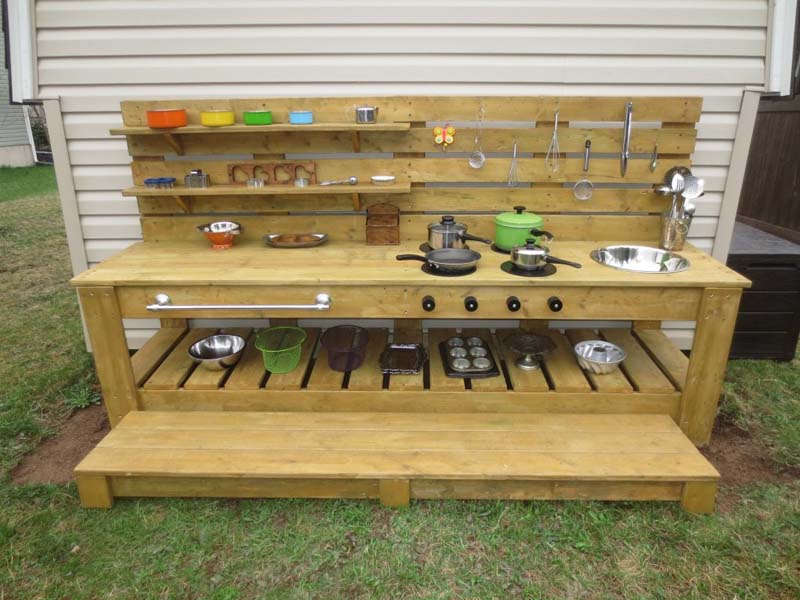
This Mud Kitchen was built by a grandfather.

This Mud Kitchen was built by parents from a program in Acton, MA.
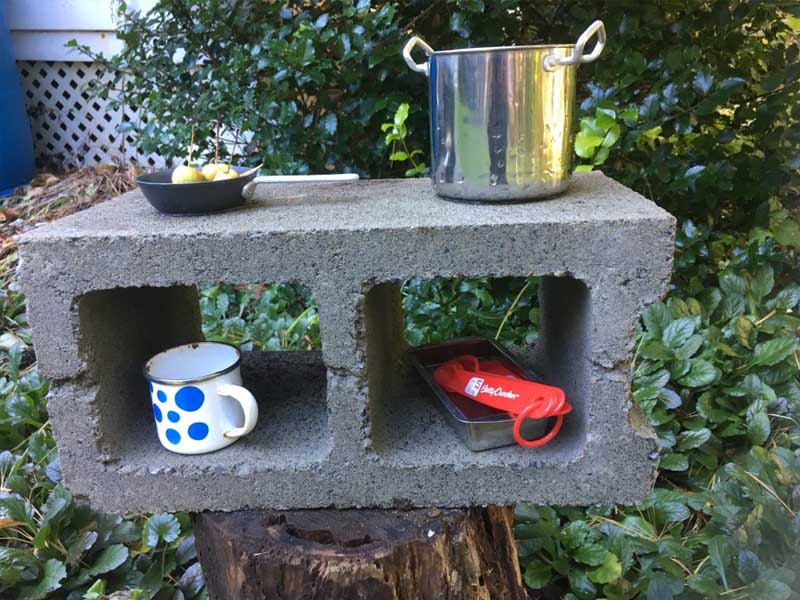
This Mud Kitchen was put together by me, Victoria Hackett.
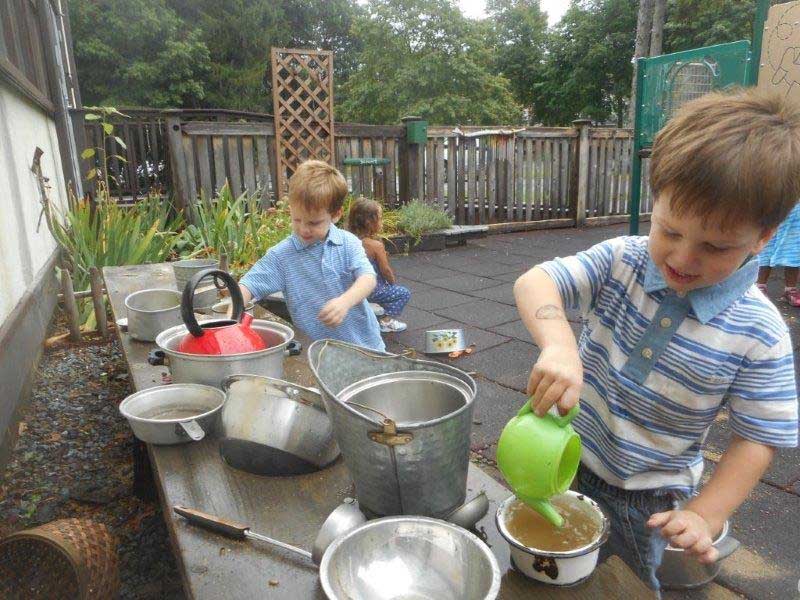
This Mud Kitchen was built by the community at Christ Church Child Care Center in Hamilton, MA.
YOUR NEXT STEPS:
- WRITE a Reflection in your Visual Journal:
- What did you learn from this Mud Kitchen Tour?
- WRITE a REFLECTION in the comments and earn your Participation Certificate
- DOWNLOAD: Building a Foundation Workbook
